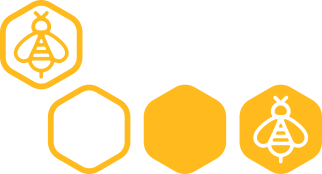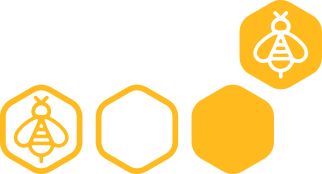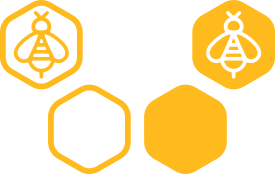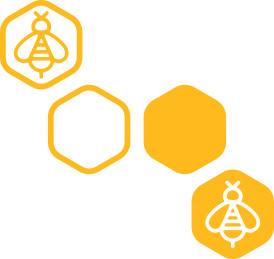In Hive® the Queen Bees enter the game within the first four turns. Hence, they will never be very far away from the two opening bugs.
In most games, players will place their Queen Bee adjacent to their opening bug (52% of the analyzed games)1. This results in five possible Initial Queen Orientations (IQO), each identified by an uppercase letter2.
The five Initial Queen Orientations can be grouped in two sets: at least one Queen Bee is placed in-line (I, J & F) or both Queen Bees are placed in an elbow (C & Z).
At least one Queen is placed inline (I, J & F)
In a I Queen Orientation, both Queen Bees are on the starting axis (5%).


The in-line placement of the Queen Bees prevents the two opening bugs from escaping. This negatively affects black, hence the significantly higher win ratio for white. Only an early counter attack by black might turn the game in their favor.
In a F Queen Orientation, the white Queen Bee is in an elbow (8%).


By choosing an elbow placement, white gains a clear advantage against the in-line placement by black that prevents their opening bug from escaping.
In a J Queen Orientation, the black Queen Bee is in an elbow (11%).


Similar to the F Queen Orientation, it favors the player that placed in an elbow: in this case black. Note however that by placing in-line, white prevents black from choosing a more balanced C or Z Orientation.
Both Queens are placed in an elbow (C & Z)
In a C Queen Orientation, both Queen Bees are on the same side of the starting axis (10%).


This Queen Orientation clearly favors draws with a 9% ratio against 2% in all other Queen Orientations. White still has a slightly higher win ratio, as the first player advantage makes it more likely that they take control of their critical space first. The critical space for white is at the top right of the Queen Bee, for black it is at the top left. When both spaces are filled, a ring is formed. Whoever goes next will free their Queen Bee or a defending bug.
In a Z Queen Orientation, the Queen Bees are on opposite sides of the starting axis (19%).


This is by far the most frequently played Initial Queen Orientation, representing 19% of the games we analyzed. The win/loss ratio is similar to the I Queen Orientation and slightly in favor of white. However, this Orientation offers more mobility to both players, resulting in more open games.
Queen Bee(s) not adjacent to opening bug
When one of the two Queen Bees is not initially placed adjacent to the player’s opening bug, the resulting Queen Orientation is called X (43% of the analyzed games)1.
In his SHOE nomenclature3, Randy Ingersoll further distinguishes different X (or extended) Initial Queen Orientations based on the number of spaces offset from the starting axis and the opening bug.
In the remaining 5% of games analyzed, one or both players placed their Queen Bee on their first turn, which is not allowed anymore according the updated official rules as of 2024 (previously Tournament rules).
References:
1 Entomologist. (2025). https://entomology.gitlab.io/ – data from 677808 games played on boardspace.net and boardgamearena.com
2 Ingersoll, Randy. (2014). pp. 223-227. (https://a.co/d/3nx3r35)
3 Ingersoll, Randy. (2023). pp. 13-15. (https://a.co/d/7EAqAwS)
